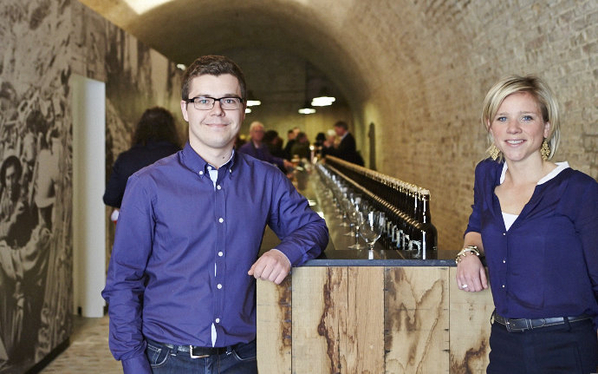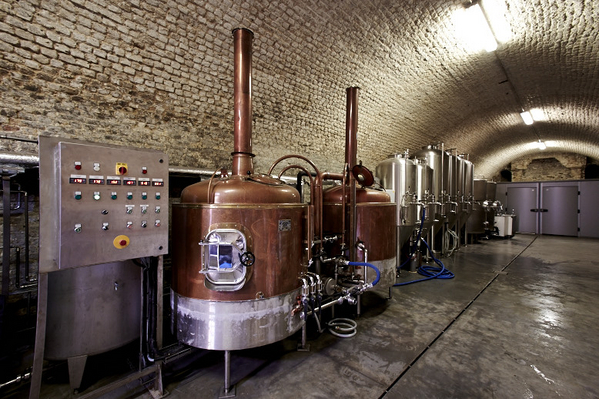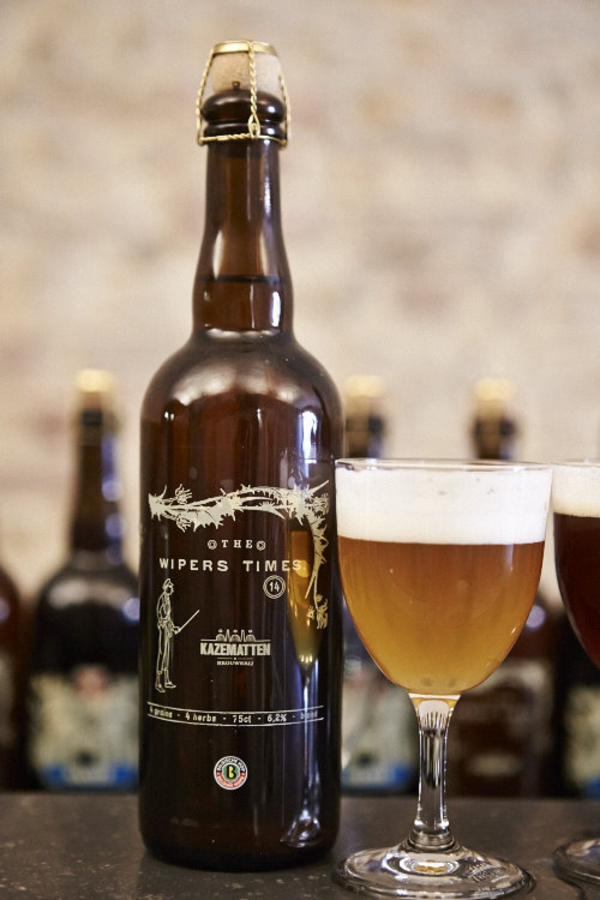Ramparts brewery salutes Ypres WWI history and the role of British Tommies
Added: Saturday, July 19th 2014

Ypres has a new brewery, one that is deeply rooted in the city’s long and tumultuous history. De Kazematten opened in April and means the “casement” or caves, based in a barrel-roofed chamber in the ancient city walls and ramparts.
The city is officially Ieper as it’s in a Flemish-speaking area in West Flanders. But in World War One French was the only language used in documents and maps, and the city was dubbed Ypres and given the nickname of Wipers by British troops.
De Kazematten commemorates the link with the much-loved Tommies of WWI by brewing a beer called Wipers Times14: Wipers 16 and 18 beers are planned. It was in this very chamber in the ramparts during the war that Captain Fred Roberts of the Sherwood Foresters discovered an old printing press. He used it with other soldiers -- including a sergeant who had been a printer -- to produce an irreverent English-language newspaper called the Wipers Times.
The paper’s masthead incorporated a thistle as it was a prickly publication that questioned military tactics and had a cartoon character of a chinless and hapless British general. The brewer at De Kazematten, Koen Hugelier, uses herbs and spices in his beer, including thistle seeds for authenticity.
Koen is a former home brewer who was recruited to run the brewery by two young people (pictured above) with strong brewing connections. Julie Depypere is the daughter of Hans Depypere, the owner of the renowned Sint Bernardus abbey brewery at Watou. Maarten Ghequire has an equally illustrious background as his father Rudi is a key manager at the Rodenbach Brewery in Roeselare, celebrated for its “sour red” beer.

The caves that hold both the brewery and the nearby De Kazematten Brasserie date from 1680 and were built for Louis XIV by his military engineer Vauban. Over the centuries, the caves have been used to store weapons, act as a food and drink store, the site of a bakery and an ice house. The city walls were one of the few constructions left standing during the German bombardment of WWI.
The brewing kit is second hand but has been lovingly cleaned, polished and restored. It’s based on the Belgian “farm house” style where the mash tun doubles as the boiling kettle after the mash of grain has been filtered in a second vessel and the sugary extract -- wort -- is then boiled with hops.
Koen uses pale malt, Pilsner malt, two varieties of caramalt, oats and wheat in his beer and adds thistle seeds and coriander as additional flavourings. Hops come from the Poperinge fields close by. No sugars or preservatives are used and the local water is de-ionised and then treated with salts as flavour enhancers. The beer is fermented in small conical vessels for a week and is then conditioned for a month. It’s 6.2 per cent alcohol and is re-fermented in the bottle: bottling is carried out at Sint Bernardus.
There are between two to four brews a week, with 600 litres per brew. Koen also brews Grotten Santé and Grotten Salut for Sint Bernardus and he showed me large oak vessels behind a screen where the two beers are aged for several months. This is a development of Grottenbier or grotto beer, introduced by the late Pierre Celis, founder of the Hoegaarden Brewery. Shortly before he died in 2011, aged 86, Pierre worked with Sint Bernardus to develop a “champagne-style beer” that is aged in limestone caves near the village of Kanne. The bottles are held in racks and turned or “riddled” every day to encourage the yeast to settle in the necks. Grottenbier continues to be made in this way but Sint Bernardus will add Santé and Salut to the range as wood-aged beers.
Wipers Times 14 is hazy blond and has a spicy, peppery hop nose with a herbal and floral note from coriander and thistles. Bitter hops build in the mouth with creamy/nutty malt, orange and lemon fruit and herbal notes. The finish starts bittersweet but bitter hops start to dominate, with a buttery note from the malt and continuing hints of spice and seeds.
The brewery, 1 Houten Paard, Ieper 8900, is open for tours on Saturdays between 3 and 5pm: parties must be a minimum of 15 and following the tour are shown a film and have a tasting of the beers. 12 euro per person. www.kazematten.be.
A short distance away at 1 Bollingstraat, Ieper 9800, the Brasserie Kazematten, also built into the city ramparts, offers the local beer plus the full range of Sint Bernardus ales. It’s next door to the local history museum and close to the Menin Gate, where the names of the British troops killed in the war are carved into the walls.









